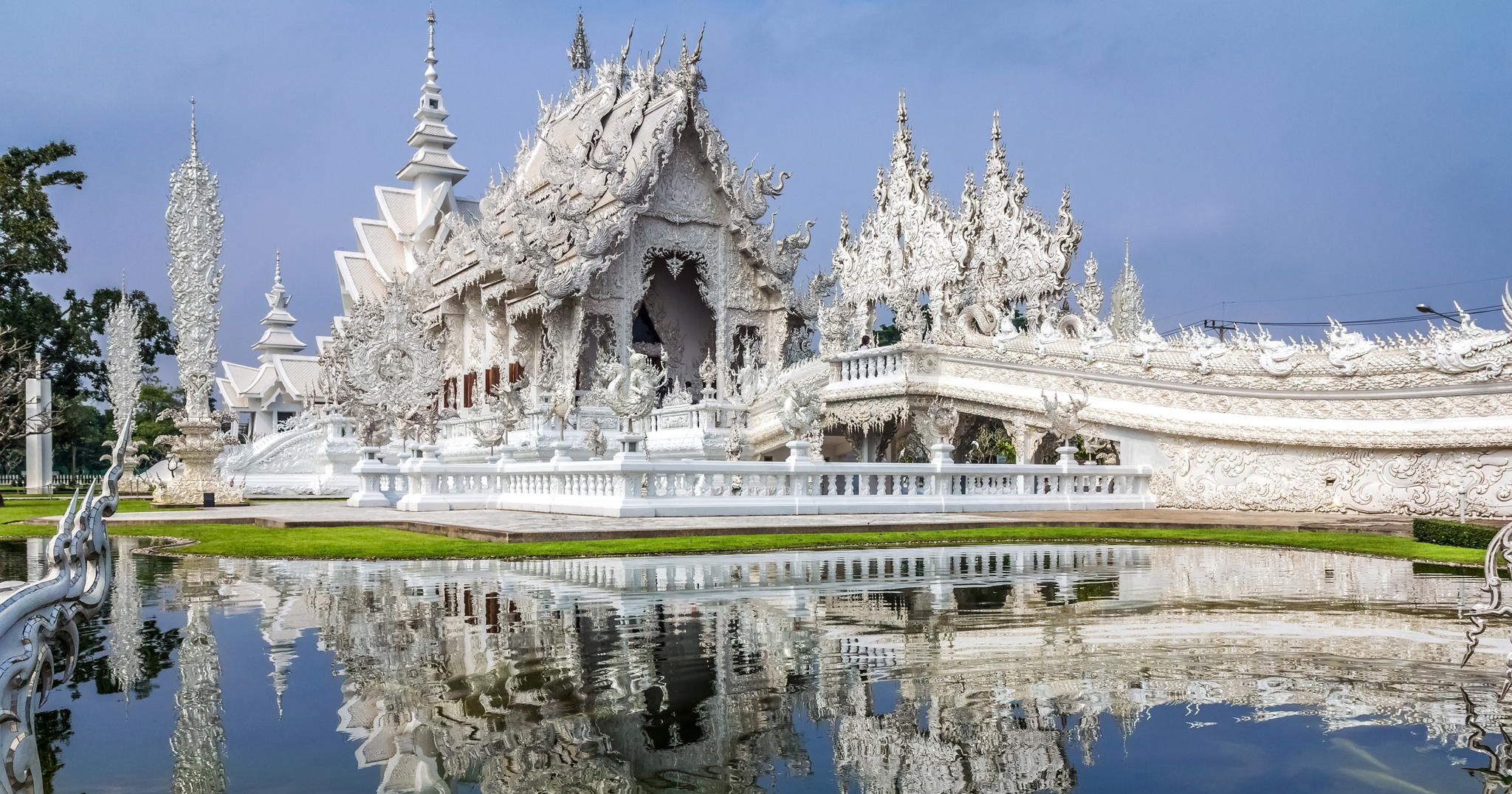Have you ever wondered about the beautiful Buddhist temples scattered across Thailand? Well, get ready to be captivated by the majestic beauty of these temples that are not only architectural wonders but also symbols of spiritual devotion. In this article, we will delve into the rich history and significance of Buddhist temples in Thailand, as well as provide you with a travel guide to experience their serene atmosphere firsthand.
From the bustling city streets of Bangkok to the tranquil countryside, Buddhist temples can be found in every nook and cranny of Thailand. These temples, also known as “wats,” are not simply places of worship, but also cultural and historical landmarks that hold immense importance for the Thai people. Adorned with intricate carvings, vibrant colors, and glistening golden roofs, these temples are a sight to behold.
In addition to their aesthetic appeal, Buddhist temples in Thailand offer a unique opportunity to immerse yourself in the local culture and gain a deeper understanding of Buddhism. Whether you’re a history buff, a spiritual seeker, or simply someone looking to experience the serene ambiance of these sacred spaces, a visit to these temples is a must on your Thailand itinerary.
So, prepare to embark on a journey through the serene and captivating world of Buddhist temples in Thailand. In the upcoming article, we will take you through the most significant and breathtaking temples in the country, provide practical tips for visiting them, and share insights into the customs and rituals associated with temple etiquette. Get ready to be enchanted by the majestic beauty and spiritual tranquility that awaits you in the land of smiles.
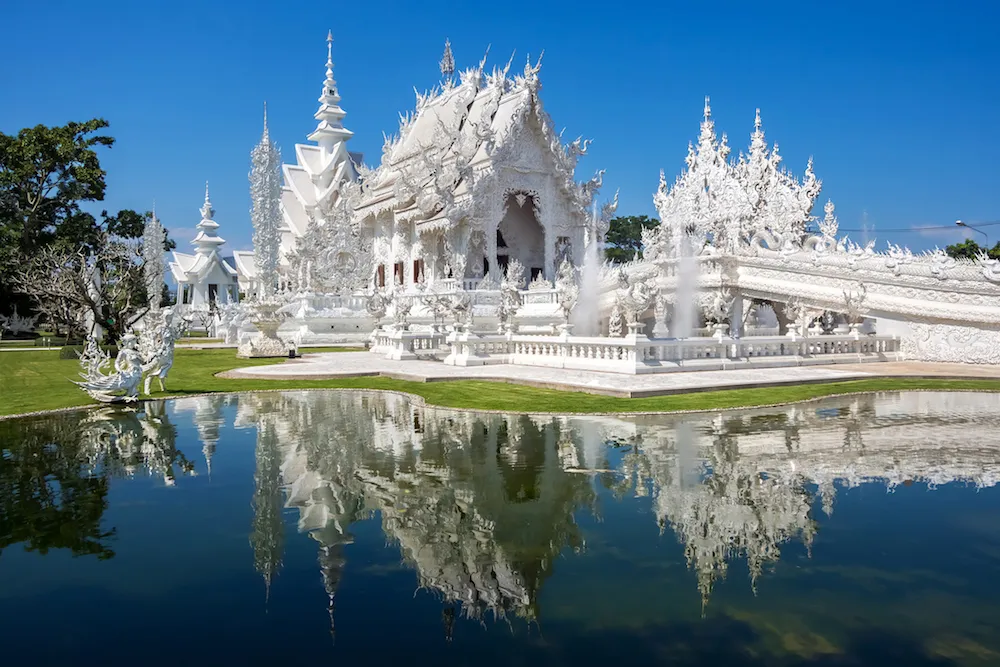
The Introduction of Buddhism in Thailand
The Construction of the First Buddhist Temples
The Spread of Buddhism and the Development of Temples
Thailand, also known as the Land of Smiles, is renowned for its majestic Buddhist temples that are scattered throughout the country. These temples, also known as wats, are not merely religious places of worship, but also significant cultural landmarks that hold great importance in Thai society. They showcase the rich history, architectural brilliance, and spiritual essence of Buddhism.
Buddhism was introduced to Thailand in the 3rd century BCE, during the reign of King Ashoka of India. Through the efforts of missionaries sent by King Ashoka, Buddhism started to take root in the region known as Siam, which is present-day Thailand. The construction of the first Buddhist temples began during this period, with a focus on establishing places for monks to live and meditate.
The spread of Buddhism in Thailand happened gradually over the centuries. As it gained popularity, the construction and development of temples continued to flourish. Initially, these temples were built with simple designs, reflecting the essence of simplicity and tranquility that Buddhism emphasizes. However, as time went on, more elaborate and grand temples were constructed, showcasing the growing influence and devotion towards the religion.
The Significance of Buddhist Temples in Thai Culture
The Role of Temples in Religious Practice
Buddhist Festivals and Rituals at Temples
Temples as Community Centers
Buddhist temples play a crucial role in Thai culture, serving as the center of religious practice, spiritual guidance, and community activities. They serve as a place of worship, where Buddhists can come to pay their respects to the Buddha and engage in meditation and other religious rituals.
These temples are not only places of personal spirituality, but also serve as gathering grounds for festivals and celebrations. Thai people come together at temples during auspicious occasions to participate in colorful and vibrant festivities, such as the Loy Krathong festival and Songkran (Thai New Year). These festivals are deeply rooted in Buddhist traditions and are celebrated with great fervor and joy.
Apart from being religious and cultural centers, temples also serve as community centers. They provide education and support for people in need, such as by offering free meals to the poor and providing shelter for the homeless. Additionally, temples act as centers for learning, where both children and adults can gain knowledge about Buddhism and Thai traditions.
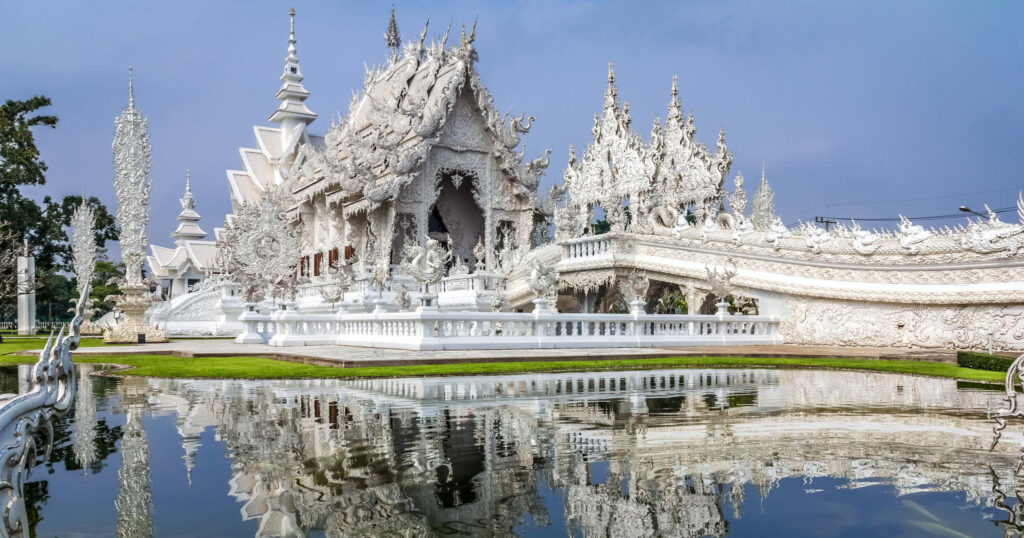
Famous Buddhist Temples in Thailand
Wat Arun
Wat Phra Kaew
Wat Pho
Wat Chedi Luang
Wat Benchamabophit
Thailand is home to countless remarkable Buddhist temples, each with its own unique history and architectural splendor. One of the most iconic temples is Wat Arun, also known as the Temple of Dawn. Located on the banks of the Chao Phraya River in Bangkok, Wat Arun is famous for its towering spires and intricate ceramic decorations that glitter in the sunlight.
Another renowned temple is Wat Phra Kaew, the Temple of the Emerald Buddha, located within the grounds of the Grand Palace in Bangkok. The temple houses the highly revered Emerald Buddha, which is carved from a single block of jade. The intricate detailing of the temple’s architecture and the priceless artifacts within make it a must-visit for any traveler to Thailand.
Wat Pho, also known as the Temple of the Reclining Buddha, is another prominent temple in Bangkok. It is home to the magnificent Reclining Buddha statue, which is an awe-inspiring sight to behold. With its intricate gold leaf designs and tranquil atmosphere, Wat Pho is a true testament to the beauty of Thai temple architecture.
In the northern city of Chiang Mai, one can find the ancient Wat Chedi Luang. This temple was built in the 14th century and was once the home of the famous Emerald Buddha. Despite some damage throughout the years, the remnants of the towering pagoda and the serene ambience make it a mesmerizing site for visitors.
Lastly, the marble masterpiece of Wat Benchamabophit in Bangkok stands out with its stunning white exterior and European-influenced design. The temple’s elegant architecture and meticulously maintained gardens make it a tranquil oasis in the bustling city.
The Architectural Beauty of Thai Buddhist Temples
Distinctive Features of Thai Temple Architecture
Intricate Carvings and Ornamentation
The Influence of Other Southeast Asian Architectural Styles
Thai temple architecture is renowned for its distinctive and intricate designs, characterized by soaring roofs, gilded decorations, and intricate carvings. The unique architectural features of Thai temples make them instantly recognizable and add to their majestic beauty.
One notable feature of Thai temple architecture is the multi-tiered roofs with swooping eaves. These roofs are usually adorned with intricately carved gables that depict scenes from Buddhist mythology and folklore. The layers upon layers of the roofs serve as a visual representation of the hierarchical structure of the universe in Buddhism.
In addition to the graceful roofs, Thai temples are known for their intricate carvings and ornamentations. Elaborate sculptures of mythical creatures, guardian spirits, and celestial beings can be found adorning the facades of the temples. These carvings often depict stories from Buddhist scriptures, adding both artistic and spiritual significance to the structures.
The architectural style of Thai temples has been influenced by various neighboring civilizations throughout history. The majestic spires known as prang bear resemblance to ancient Khmer temple architecture, reflecting the influence of the Angkor Empire. Furthermore, the use of intricately carved teakwood structures and roofs in temple construction showcases the influence of traditional Lanna and Ayutthaya architectural styles.
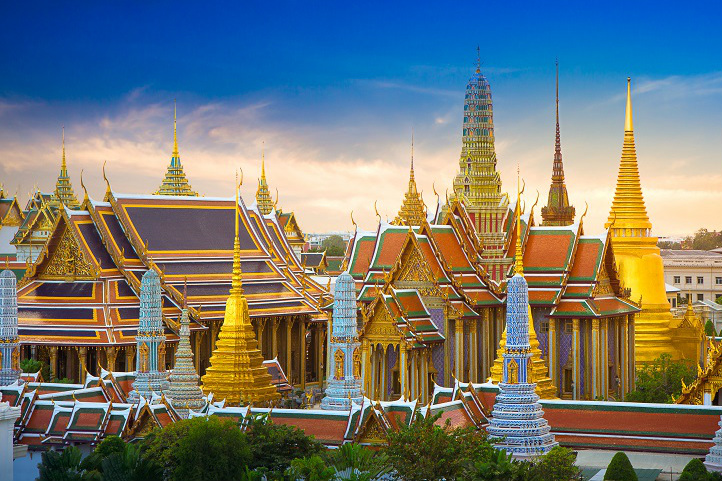
The Symbolism and Iconography of Buddhist Temples
The Importance of the Buddha Image
Exquisite Temple Decorations and Symbolic Elements
Significance of Different Temple Layouts
Buddhist temples are not only architectural marvels, but also symbolize important aspects of Buddhist beliefs and teachings. The main focus of a temple is the Buddha image, which serves as a representation of the Buddha’s purity, wisdom, and enlightenment. Within the temple, the Buddha image is usually placed on a raised platform, surrounded by offerings and worshippers.
Temple decorations are meticulously designed to embody the teachings of Buddhism and convey spiritual messages. Intricate murals and frescoes depict scenes from Buddhist stories and teachings, guiding visitors through the moral virtues and life lessons of the religion. Additionally, the use of lotus flowers, elephants, and other symbolic elements further enhance the spiritual atmosphere within the temple.
The layout of a temple also holds significant meaning. The entrance gateway, known as the ordination hall or ubosot, symbolizes the threshold between the secular world and the spiritual realm. The main prayer hall, with its grand Buddha image, represents the center of worship and meditation. Other structures within the temple complex, such as pagodas and meditation halls, serve as additional points of reverence and reflection.
Buddhist Monastic Life and Education in Thai Temples
The Daily Life of Buddhist Monks
Monastic Education and Meditation Practices
Thailand’s Forest Monasteries and Meditation Retreats
Buddhist temples in Thailand are not only places for religious devotion, but also serve as monasteries for Buddhist monks to practice and seek enlightenment. Monastic life is an essential part of Thai Buddhism, and monks are held in high regard within society.
The daily life of a Buddhist monk revolves around a strict routine of meditation, study, and community service. They wake up before dawn to participate in morning chanting and meditation sessions. Throughout the day, they devote themselves to studying Buddhist scriptures, practicing meditation, and performing various religious rituals.
Monastic education plays a vital role in the training of Buddhist monks in Thailand. Within the temple grounds, young novices and monks receive education on Buddhist teachings, moral values, and meditation techniques. This education not only provides them with spiritual guidance, but also equips them with valuable life skills.
Thailand is renowned for its forest monasteries and meditation retreat centers, where monks and laypeople alike can deepen their spiritual practice. These serene sanctuaries, often located in the tranquil countryside, offer a peaceful and secluded environment for meditation and contemplation. Many seekers of inner peace and spiritual enlightenment come from all over the world to experience the tranquility and wisdom present in these forests.
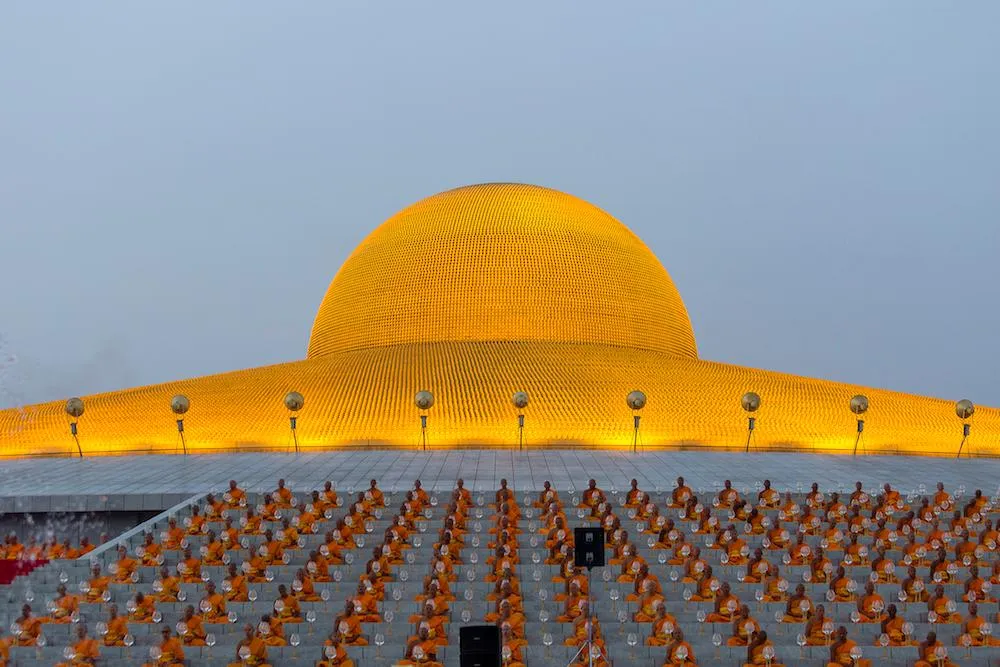
The Conservation and Restoration of Thai Buddhist Temples
Challenges in Preserving Historical Temples
Initiatives for Restoration and Conservation
Public Awareness and Engagement
Preserving the historical temples of Thailand is a significant challenge due to various factors, such as climate, natural disasters, and urban development. The delicate nature of the architectural structures and the precious artifacts within require constant maintenance and restoration efforts.
Various initiatives have been implemented to ensure the preservation and conservation of Thai Buddhist temples. Government agencies and non-profit organizations work together to raise awareness and provide funding for restoration projects. Skilled artisans and architects are employed to restore damaged structures and preserve the intricate artwork found within the temples.
Public awareness and engagement also play a crucial role in the conservation efforts. Educational programs and campaigns are conducted to instill a sense of responsibility and pride in preserving the cultural heritage of the temples. Visitors are encouraged to be respectful of the temples’ sacredness and to contribute to their preservation through donations and volunteering.
The Experience of Visiting Buddhist Temples in Thailand
Etiquette and Dress Code for Visitors
Participating in Buddhist Ceremonies and Offerings
Guided Tours and Cultural Experiences
Visiting a Buddhist temple in Thailand is a unique and enriching experience that allows travelers to immerse themselves in the country’s rich cultural heritage. However, it is important to observe certain etiquette and dress code to show respect for the sacredness of the temple.
When visiting a temple, it is customary to dress modestly and conservatively. Both men and women should cover their shoulders and knees, and remove their shoes before entering the main hall or any sacred areas. Additionally, maintaining a quiet and respectful demeanor is essential to creating a peaceful atmosphere within the temple grounds.
Participating in Buddhist ceremonies and offerings is another way to engage with the local culture during a temple visit. Visitors can observe or join in with the monks’ chants and rituals, and may also have the opportunity to make offerings of flowers or incense at the altar. These experiences offer a glimpse into the spiritual practices of Buddhism and provide a deeper understanding of Thai cultural traditions.
Guided tours and cultural experiences organized by temples or local guides offer an in-depth exploration of the temple complex and its surrounding areas. Knowledgeable guides share stories and historical information, allowing visitors to gain a deeper appreciation for the significance and beauty of the temples. Additionally, cultural activities such as Thai massage workshops or traditional Thai cooking classes can provide a hands-on experience of Thai traditions and spirituality.
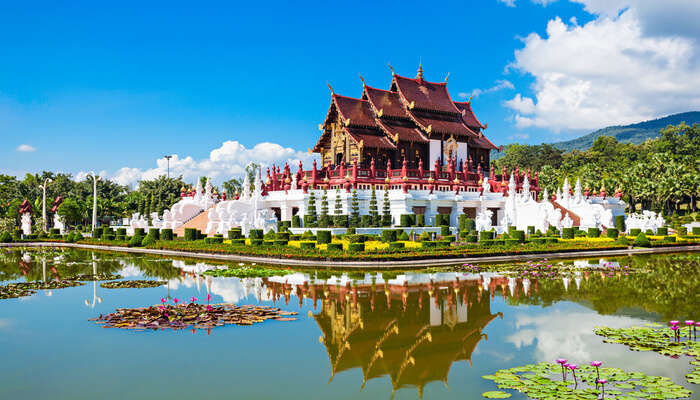
Buddhism and Tourism in Thailand
The Role of Temples in Thai Tourism Industry
Pilgrimages and Spiritual Tourism
Ethical Considerations for Tourists
Buddhism and tourism in Thailand are intricately linked, with many tourists visiting the kingdom specifically to explore its diverse Buddhist temples. Temples play a vital role in the country’s tourism industry, attracting visitors from all over the world who seek a deeper understanding of Thai culture and spirituality.
Pilgrimages to significant temples are a common practice for both locals and international visitors. These pilgrimages offer a chance for spiritual reflection and provide a connection to the country’s religious and cultural heritage. The experience of visiting temples and engaging in spiritual practices can bring peace, serenity, and a sense of well-being to travelers.
While temples greatly welcome and embrace tourists, it is essential for visitors to be mindful of their actions and demonstrate respect towards the sacredness of the places they visit. Tourists should avoid excessive noise, be mindful of appropriate attire, and refrain from touching or climbing on any religious artifacts. Respecting the local customs and traditions is crucial to ensuring a mutually beneficial and ethical experience for both tourists and the local community.
Conclusion
The majestic beauty of Buddhist temples in Thailand is a testament to the rich history, intricate craftsmanship, and deep spirituality of Thai culture. These temples captivate and inspire visitors from all walks of life, providing a sanctuary for personal reflection, cultural appreciation, and spiritual connection.
From the iconic Wat Arun and Wat Phra Kaew in Bangkok to the ancient Wat Chedi Luang in Chiang Mai, each temple holds a unique story and offers a glimpse into the teachings and traditions of Buddhism. The architectural brilliance, the symbolic elements, and the serene atmosphere found within these temples create a profound and awe-inspiring experience for those who visit.
As Thailand continues to embrace its cultural heritage and prioritize the preservation of its temples, travelers can be confident that their visit to these sacred places not only offers a memorable travel experience, but also contributes to the conservation of these monumental sites for future generations to cherish. The Majestic Buddhist Temples of Thailand truly deserve their place as a must-visit highlight for anyone seeking to explore the wonders of this remarkable country.
